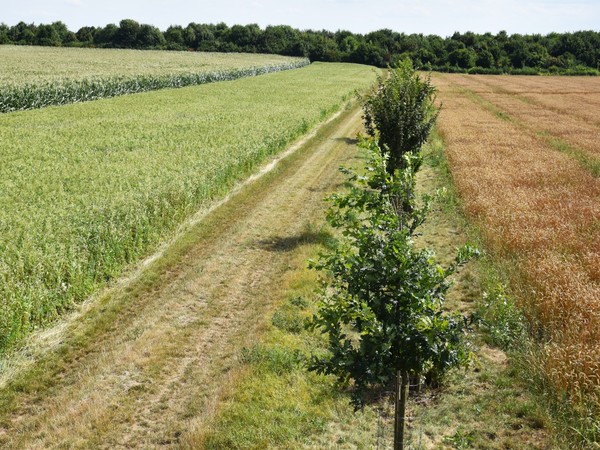An expert study by an international team of scientists led by Tomáš Václavík from the Department of Ecology and Environmental Sciences provides a new perspective on the implementation of agri‑environmental measures in European agriculture. The authors focused on creating a typology of agricultural holdings that can help better target agri-environmental policies and improve the sustainability of farming in Europe. The results of their scientific work were published in the journal Environmental Research Letters.
Scientists from several European institutions analysed data from nearly 8,000 farms in the Czech Republic, Germany, and the UK. They used data from the Integrated Administration and Control System (IACS), which provides precise information on the size and location of each farm plot, the type of land, the crops grown, and the agri-environmental measures in place. Using this data, the experts then developed a simplified typology of agricultural systems (“farm archetypes”), which allows for the identification of groups of farms that respond similarly to subsidy instruments of agricultural policy.
Subsequent analyses have shown that economically-large farms focused on crop production dominate not only in the Czech Republic but also in the other investigated regions of Europe, covering 60 to 80 percent of the total agricultural area. At the same time, large agricultural holdings use agri-environmental measures more often and tend to adopt a wider range of measures. Economically-small farms focus on a much narrower spectrum and make up to 70 percent of farms that do not implement any of the possible agri-environmental measures.
“Our findings suggest that targeting smaller farms and reducing the administrative burden associated with implementing the measures is key to increasing the effectiveness of agri-environmental instruments of the Common Agricultural Policy,” said the study’s lead author, Tomáš Václavík. “At the same time, we identified important differences between regions that need to be taken into account when designing future policies,” he added.
The study uses an innovative approach, farm archetypes, which allows for categorising farms according to their economic size and specialisation. This approach can help policy makers better understand the diversity of farms and their perspectives on agri-environmental programmes.
“The proposed typology represents a compromise between highly targeted but costly incentives for individual farms and a blanket application of agri-environmental policy that does not take into account important differences in the size and nature of farms,” explained study co-author Bořivoj Šarapatka from the Department of Ecology and Environmental Sciences.
The research results can help to better target agri-environmental programmes and increase their effectiveness in protecting biodiversity and ecosystem services in the European agricultural landscape. “The key to success is to understand the diversity of agricultural holdings and adapt subsidy instruments to their specific needs and possibilities,” concluded Václavík.
The study was developed within the European BESTMAP project funded by Horizon 2020.
